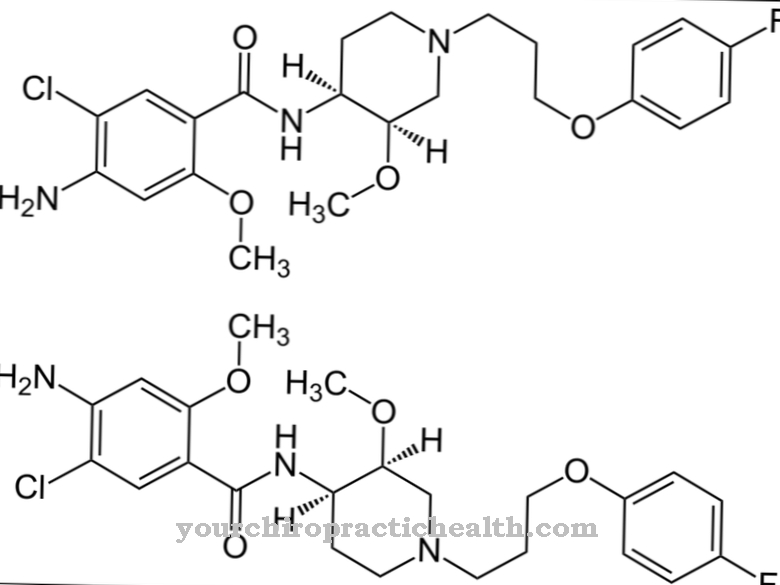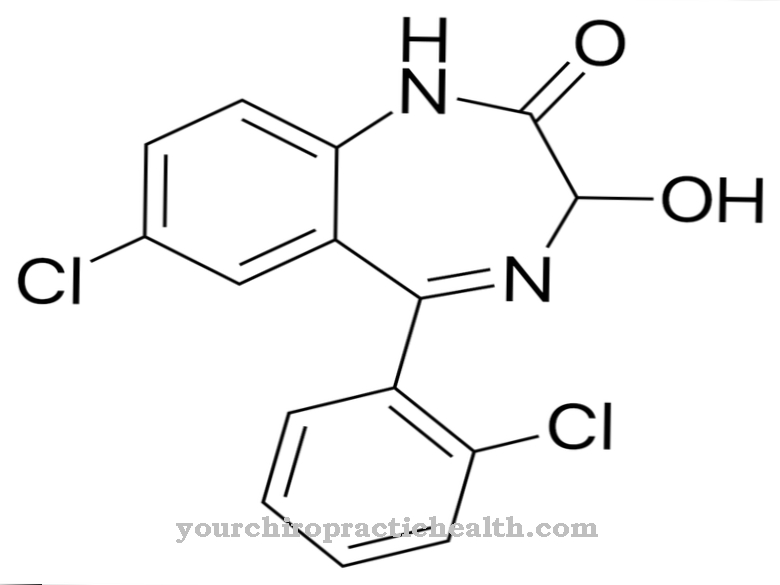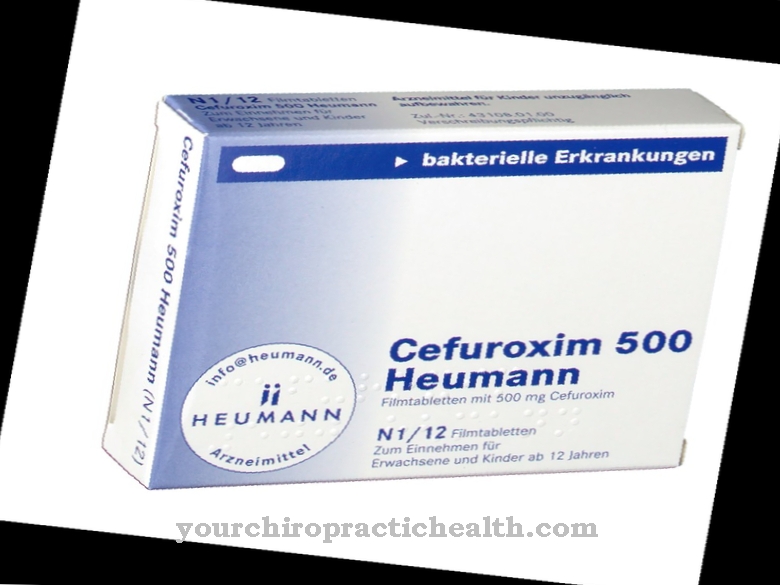At Fluoroquinolones it is a subgroup of the so-called quinolones. They are used in medicine as antibiotics. At the same time, they are among the gyrase inhibitors and differ from other substances of this type in their wide range of effects. Modern fluoroquinolones are effective against pathogen enzymes such as topoisomerase IV.
What are fluoroquinolones?

Fluoroquinolones are used in human and veterinary medicine. From a chemical point of view, fluoroquinolones have a fluorinated backbone. They also have a so-called piperazine substituent. Originally the fluoroquinolones were called as Gyrase inhibitors designated. However, this term is rarely used nowadays.
The division into different groups took place in 1998 and was inspired by the recommendations of the PEG. The division and assignment to different groups is based on various criteria. These include pharmacokinetics, the clinical area of application and the antibacterial spectrum.
Numerous drugs are now no longer available on the market. Instead, new active ingredients have been approved and certain areas of indication have been expanded. Currently, from the group of fluoroquinolones, only the drugs enoxacin, norfloxacin, ciprofloxacin, ofloxacin, moxifloxacin and levofloxacin are available.
Pipemidic acid is a special quinolone that is not fluorinated. Today, however, this substance is no longer of any importance, which is why it is not considered. As a result, according to the classification of the PEG in the individual groups I, III and IV, only one active ingredient remains. For this reason, an indication-related group assignment is advocated under clinical aspects. However, it should be noted that the individual active ingredients for different indications also differ in terms of their dosage.
Pharmacological effect
Fluoroquinolones have a bactericidal effect, which is highly dependent on the concentration. By interacting with a gyrase and topoisomerase, which specializes in DNA, various processes in the division and repair of DNA are hindered.
In terms of their respective spectrum of activity, fluoroquinolones differ greatly from one another. The enzyme gyrase belongs to the bacteria and causes the DNA to spiral, which is also known as supercoiling. The fluoroquinolones impair this enzyme in its effectiveness. As a result, the mechanical energy that is stored in the chromosomes of the bacteria is reduced.
At the same time, the length of the chromosomes increases. The result is that the bacteria's DNA can no longer be replicated without errors. First of all, this inhibits the growth of bacteria, which is known as the bacteriostatic effect. Then the cells of the bacteria die, so that the bactericidal effect unfolds. Newer versions of the fluoroquinolones also act against bacterial topoisomerase enzymes.
Basically, fluoroquinolones have a relatively wide spectrum of activity against many gram-positive and gram-negative pathogens. Only certain anaerobes and various streptococci are resistant. From a medical point of view, almost all bacterial infections are an indication for fluoroquinolones. The focus is on infections of the urinary and respiratory tract. They are particularly recommended for urinary tract infections in areas that are resistant to certain other antibiotics.
Medical application & use
Fluoroquinolones are used in a number of diseases, particularly bacterial infections. In order to get a better overview, the fluoroquinolones were divided into two main indication areas A and B. These are classified according to the indication and dosage of the respective active ingredients. The subdivision is a supplement to the group division.
Indication area A includes all orally available fluoroquinolones. Medicines from this group are mainly used to treat mild urinary tract infections. Indication area B includes those fluoroquinolones which, in higher doses, are also suitable for the therapy of systemic and severe infections.
Fluoroquinolones are usually divided into groups that were introduced by the Paul Ehrlich Society. The fluoroquinolones are subdivided according to both effectiveness and the possible application of the antibiotics.
Group I includes the oral fluoroquinolones, which are used in the context of urinary tract infections. The systemically applicable fluoroquinolones from group II have a very broad spectrum of activity. Group III includes those fluoroquinolones that are more effective against atypical and gram-positive germs. Group IV includes fluoroquinolones with higher effectiveness against atypical and gram-positive germs and against anaerobes.
Risks & side effects
Therapy with fluoroquinolones can result in side effects that occur on average in around four to ten percent of patients. Gastrointestinal complaints such as diarrhea and nausea as well as central nervous effects occur most frequently. Behavioral disorders with increased suicidality are also possible less frequently.
Sometimes tendon ruptures and tendinitis occur. Observations have shown that if corticoids are taken at the same time, the likelihood of tendon ruptures increases. For this reason, patients who have suffered from tendon disorders in the past should refrain from treatment with fluoroquinolones.
In addition, fluoroquinolones have a phototoxic potential, which is why contact with sunlight or UV light in general should be avoided. Fluoroquinolones from groups III and IV sometimes extend the so-called QT interval in the ECG. This increases the likelihood that ventricular arrhythmias will occur. Liver-toxic effects from fluoroquinolones have also been observed.
























.jpg)



